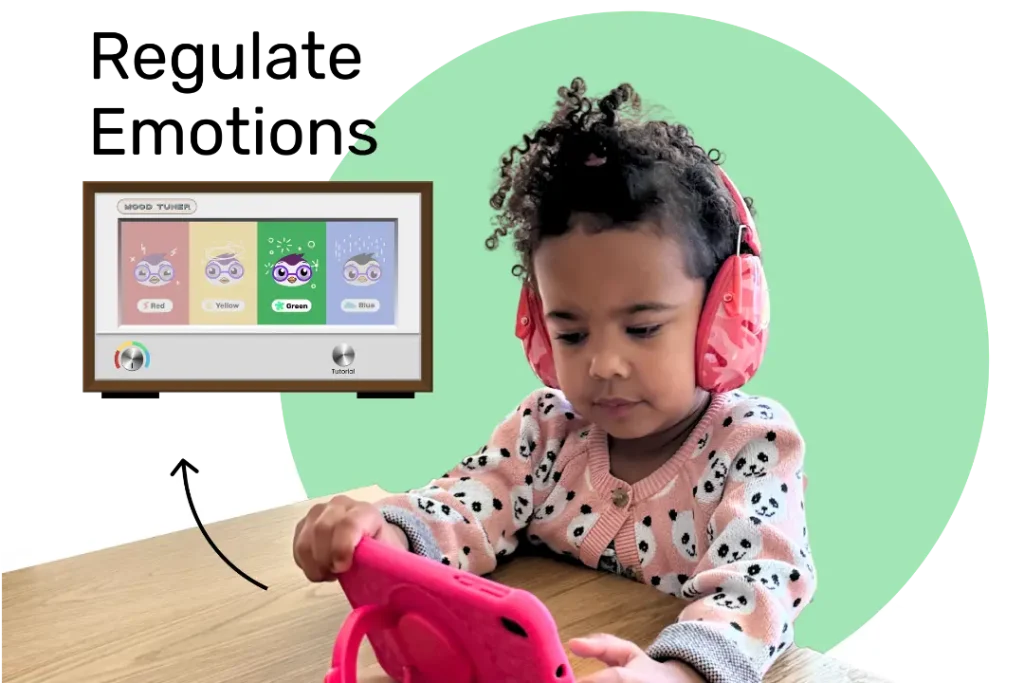Red emotions can be tough to spot, especially in kids who are still learning how to navigate their feelings. This guide will help you understand what red emotions are and how to identify them in your child.
Key Takeaways:
- Red emotions are intense feelings like anger, frustration, and aggression.
- Recognizing these emotions early helps manage outbursts and teach emotional regulation.
- Common signs include yelling, hitting, and emotional outbursts.
So, what are red emotions? Red emotions, such as anger or frustration, are intense feelings that kids may struggle to express appropriately. Learning to spot these emotions helps you guide your child toward healthier emotional responses.
Table of Contents
Step 1: Understand What Red Emotions Are
Red emotions are those big, intense feelings that often come out as anger, frustration, or even aggression. You might see them when your child is upset about losing a game or when they don’t get their way. These emotions are part of the “emotional traffic light” system, where red means stop and calm down.
For kids with neurodivergent tendencies, such as ADHD or autism, these emotions can show up more often or feel even bigger. It’s not just a “bad mood”—these emotions are the brain’s way of saying, “I’m overwhelmed, and I don’t know what to do!” By understanding these feelings, we can better help our kids learn to manage them.
Step 2: Recognize the Triggers
Triggers are events or situations that spark red emotions. For some kids, it’s a loud noise or sudden change in plans. For others, it might be something as simple as losing a toy. To identify your child’s triggers, pay attention to what happens right before an emotional outburst. Is it during transitions? When there’s too much noise? Pinpointing these triggers helps you anticipate and prepare for red emotions.
Common triggers include:
- Transitions between activities or places
- Unexpected changes to routines
- Frustration during learning tasks
- Social conflicts like sharing or playing fair
Research from the Child Mind Institute shows that understanding these triggers is crucial in helping kids learn emotional regulation strategies.

Read more: Emotions Quiz for Kids
Step 3: Observe Body Language and Facial Expressions
Kids often show their emotions through body language before they ever say a word. Watch for clenched fists, tense muscles, or a red face. These physical signs are often the first indicators of red emotions bubbling up. Pay attention to their facial expressions, too—furrowed brows, glaring eyes, or a tight jaw can be a telltale sign of anger or frustration.
These signs are like warning lights. The earlier you spot them, the better chance you have of guiding your child through their feelings before they escalate. For example, my niece clenches her fists when she’s frustrated. Recognizing that cue helps me step in before the situation gets out of hand.
Step 4: Listen to Their Words
Words can be a powerful indicator of red emotions. When kids use phrases like “I hate this!” or “You’re not fair!” they’re often expressing feelings of anger or frustration. Pay close attention to the language they use and the tone in which they say it. Are they shouting? Are they repeating the same phrase angrily? These are signs that red emotions are at play.
Encouraging your child to talk about their feelings in a calm moment can help them learn to express themselves better. In moments of red emotions, though, it’s crucial to focus on understanding rather than correcting their language immediately.
Step 5: Identify Behavioral Outbursts
Behavioral outbursts, like hitting, throwing, or screaming, are classic signs of red emotions. These outbursts are often a child’s way of coping when they don’t have the words to express their frustration or anger. It’s easy to see these behaviors as just “acting out,” but they are often rooted in an emotional struggle.
According to the American Academy of Child & Adolescent Psychiatry, responding with calmness and guidance rather than punishment can help kids learn to manage these outbursts. Think of it as teaching them to steer their emotional car back into the green zone, where they feel safe and in control.
Step 6: Use Visual Aids to Help Kids Understand
Visual aids like emotional charts or color-coded feelings wheels can help kids recognize and label their red emotions. Tools like Goally’s visual schedules can be particularly effective for kids with learning differences, providing a clear and straightforward way to understand their feelings.
For instance, using a “feelings thermometer” can help your child rate their emotions from calm (blue) to extreme anger (red). This not only helps you see where they are emotionally but also gives them a tool to communicate their feelings before an outburst happens.
Step 7: Create a Calming Strategy Toolbox
Once you’ve identified red emotions, the next step is to help your child manage them. Creating a toolbox of calming strategies can be a game-changer. This might include deep breathing exercises, squeezing a stress ball, or using a weighted blanket. The idea is to have a list of go-to strategies that help your child when they feel overwhelmed.
Here’s a simple list of calming strategies to try:
- Deep breathing: Inhale for 4 seconds, hold for 4, exhale for 4.
- Counting backwards: It’s a quick way to refocus.
- Taking a break in a quiet space: Sometimes, a little distance from the situation helps.
Building this toolbox isn’t just about fixing a meltdown in the moment; it’s about teaching lifelong skills that help kids handle big emotions as they grow.
Step 8: Model Healthy Emotional Responses
Kids learn a lot by watching us. If you handle your frustration calmly, they’ll be more likely to mimic that behavior. Narrate your own feelings when appropriate, like saying, “I’m feeling frustrated, so I’m going to take a few deep breaths.” This gives them a real-life example of managing red emotions.
It’s okay to show your emotions too. In fact, it’s important. It shows your child that feeling big emotions is normal and that there are healthy ways to handle them. Just remember, they’re always watching and learning from you, even in those challenging moments.

Read more: Anger Test for Your Child | 10 Questions
Step 9: Practice Patience and Positive Reinforcement
Patience is key when helping kids with red emotions. Positive reinforcement, like praising your child when they use a calming strategy, can make a huge difference. Instead of focusing solely on the outburst, highlight the times when they manage their feelings well. This encourages them to repeat those positive behaviors.
Offering specific praise—“I love how you took deep breaths when you felt angry”—helps reinforce the idea that they have control over their emotions. In my opinion, positive reinforcement can be one of the most powerful tools in guiding your child toward emotional maturity.
Step 10: Seek Professional Support if Needed
If your child’s red emotions are frequent, intense, or impact their daily life, it might be time to seek professional support. Therapists, occupational therapists, and child psychologists can offer strategies tailored to your child’s unique needs. They can also help rule out underlying conditions that might be contributing to emotional challenges.
Don’t hesitate to reach out for help if you feel like you’re in over your head. Sometimes, an outside perspective is exactly what’s needed to get back on track.
Goally | Kid’s Tablet for Building Emotional Regulation Skills
Is your child struggling with understanding and managing their emotions? Goally teaches emotional regulation skills in a fun and interactive way!

The Mood Tuner app encourages kids to look inwards and identify their feelings, helping them understand what’s going on inside. Once they’ve recognized their emotions, they can choose from a variety of exercises designed to help them self-regulate and find their balance.
Identifying red emotions in your child is about understanding, not just reacting. The more you learn about what triggers these emotions and how to spot them early, the better equipped you’ll be to guide your child through those tough moments.
Resources:
FAQs about Red Emotions
What are red emotions?
Red emotions are intense feelings like anger, frustration, and aggression that signal distress.
How do I identify red emotions in my child?
Look for signs like yelling, hitting, tense body language, and emotional outbursts.
What triggers red emotions in kids?
Common triggers include sudden changes, frustration, sensory overload, and conflicts.
How can I help my child manage red emotions?
Teach calming strategies like deep breathing, taking breaks, and using visual aids.
Why is it important to recognize red emotions?
Recognizing red emotions early helps guide your child toward healthier emotional responses.
This post was originally published on 09/22/2023. It was updated on 08/30/2024.

Hennah is an experienced writer and researcher, helping children with autism, ADHD, and other neurodivergent conditions. As a blog contributor for Goally, she combines her deep understanding of neurodiversity with practical advice, offering valuable insights to parents and educators.





